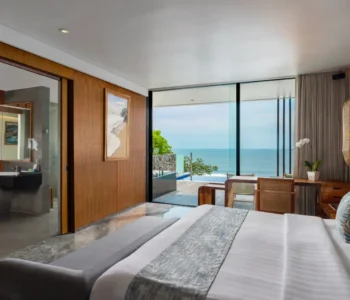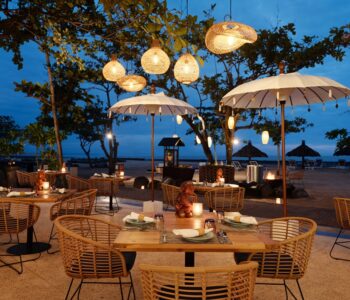At the end of May 2022, ‘Domus Anguillae’, or ‘House of Eels’ was submerged into the sea off the coast of Tejakula, north-east Bali. It marked the 11th coral reef art installation made by artist Teguh Ostenrik, part of the efforts of the Terumbu Rupa Foundation (or Yayaysan Terumbu Rupa).
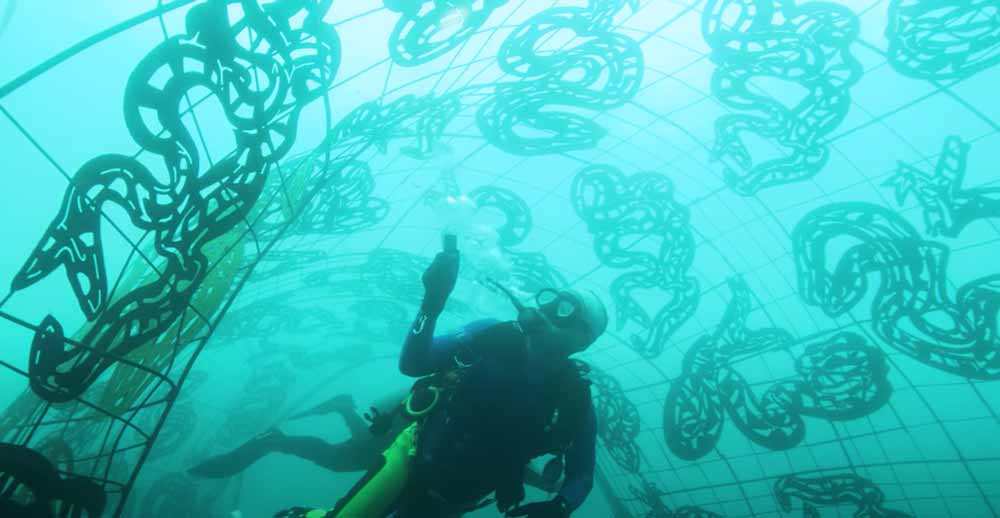
About the ARTificial Reef Project
As the world’s largest archipelago nation, the biodiversity of Indonesia’s coral reefs are among the most rich in the world. It’s 51,000km2 of coral reefs represent 18% of the world’s total (source).
Coral reefs are important for many reasons: they provide 70% of the oxygen to our planet, they are centre of marine biodiversity, they protect coastlines from wave erosion… but they also provide to local economies, from fishing to tourism. Yet, according to recent studies, 70% of Indonesian reefs have less than 50% coral coverage, classified as ‘Poor’ or ‘Fair’ (source), due to human intervention and degradation. According to the World Resources Institute (WRI), more than 85% of Indonesia’s reefs are under threat due to human activity.
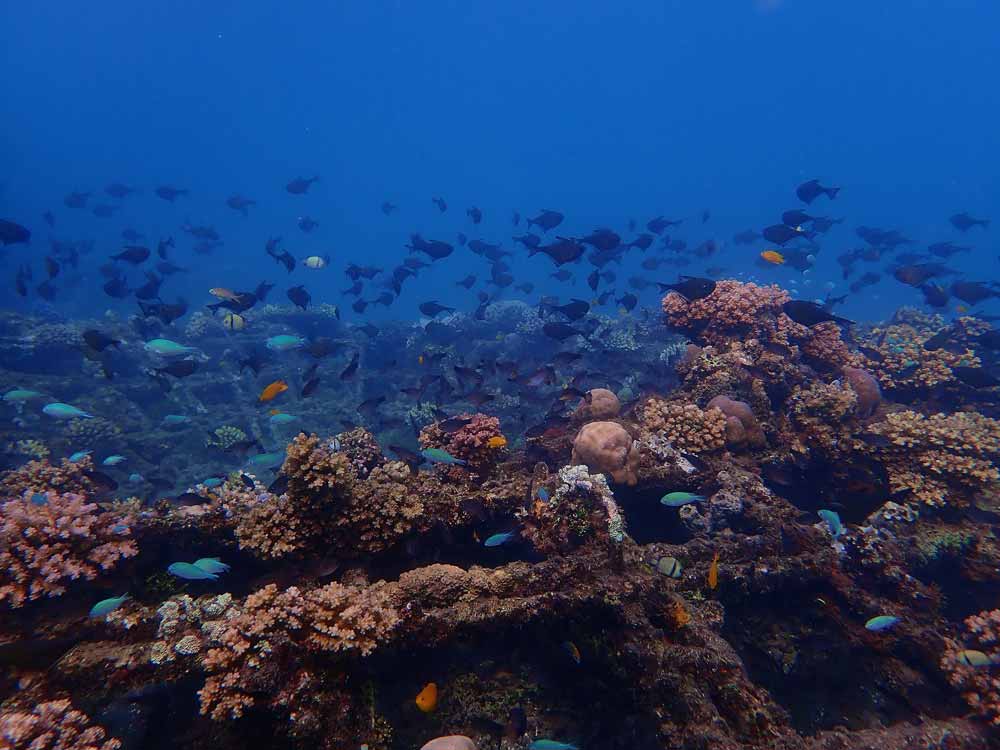
This combination of factors is what motivated a group of divers of various backgrounds to found Yayasan Terumbu Rupa, an organisation with the mission to preserve and conserve coral reefs throughout Indonesia, using art as their medium.
This was the birth of their ARTificial Reef projects; stunning, large-scale sculptures fused with Biorock Technology that stimulate coral growth. The beautiful, behemoth structures are submerged into the sea at hand-picked spots that are seen to be suffering from coral reef degradation.
The Artist: Teguh Ostenrik
The organisation was founded by Teguh Ostenrik, an internationally-recognised Indonesian artist, and also the man behind the creation of these sculptures. The Jakarta-born artist developed most of his creative finesse in Germany, finishing his studies with a Masters Degree in Fine Arts at Hochschule der Künste (Berlin University of the Arts), in what was still West Berlin. He worked in Europe, establishing his own atelier in Köln, before moving back to Jakarta in 1988, establishing a series of galleries over the years. He has had more than one hundred solo and group exhibitions in the USA , Europe (France, the Netherlands, Germany), Australia and throughout Asia .
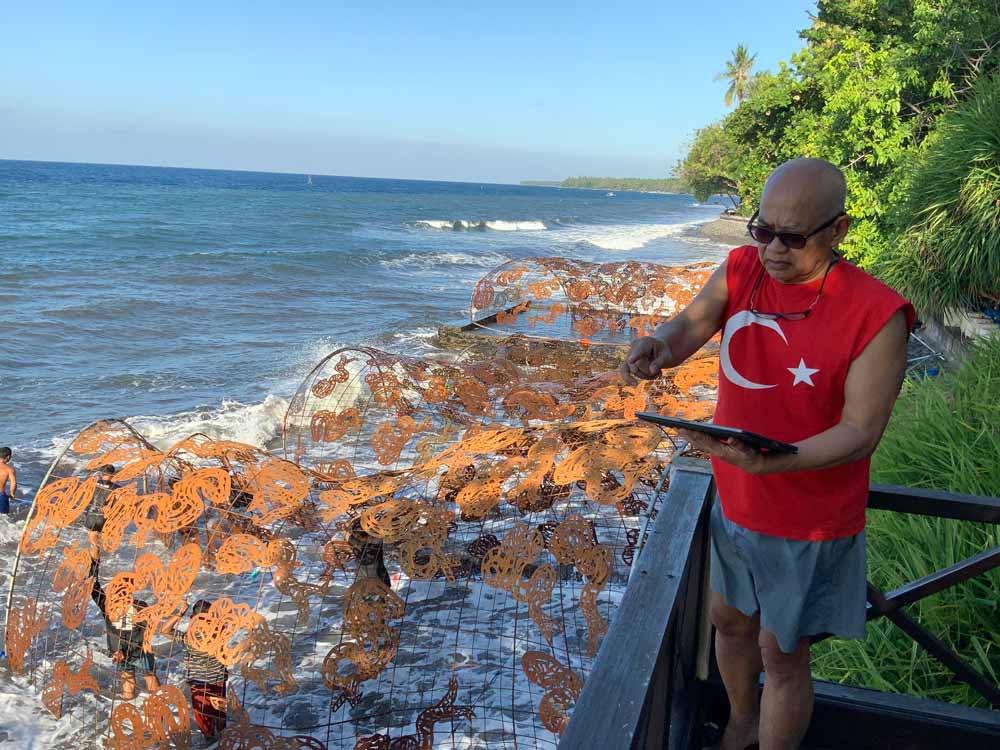
“He is one of the first conceptual artists in Indonesia. One impressive example is an art installation displayed in RTH Kalijodo, Jakarta, in 2017, which utilised 4 segments from the Berlin Wall that separated the two Germanies. Then it was not the wall that mattered, but the notion “of political separation”. Today, it is not the domus that matters, but the idea of ecological disruption. Teguh Osentrik is an eye opener on the frontline of Indonesian art,” shares art historian Jean Couteau.
Ostenrik’s works have long been created based on his respect to the environment. He often used recycled materials and in paintings utilised earthy, tertiary colours to represent nature. His artworks range from paintings to sculptures, terracotta an installations. He also loves to dive.
Ostenrik fell in love with diving in Lombok back in 1984, but upon his return in 2013 he was taken-aback the immense degradation of the coral reef. “It was like an underwater Sahara desert,” he told journalists.
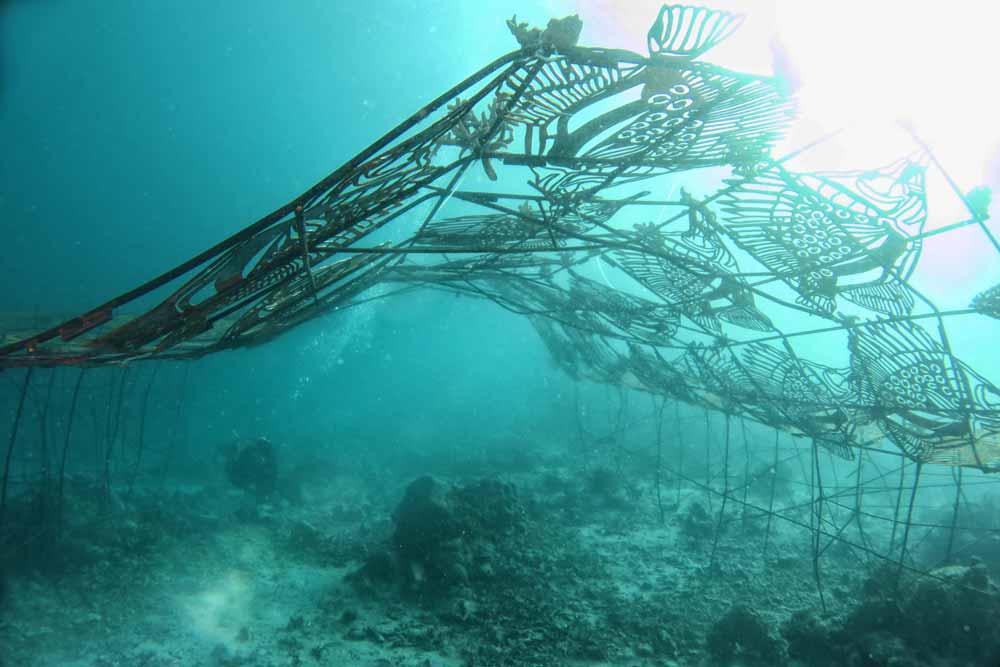
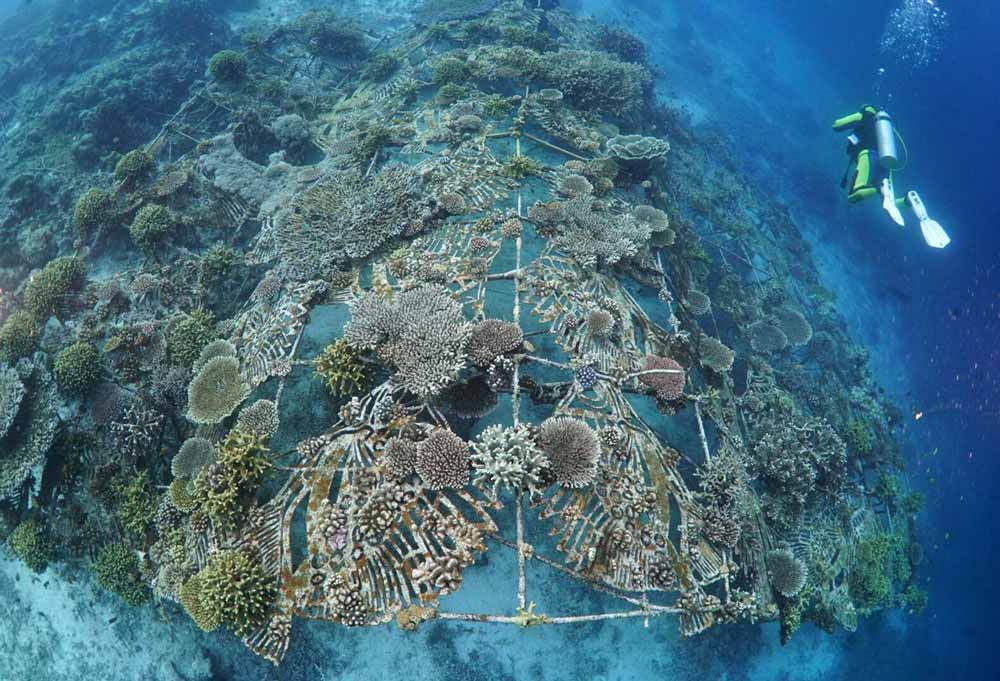
This led him to create the first installation, Domus Sepiae (home of squids) was planted at Senggigi Beach; and since he has continued to make and plant more installations across the country, from Wakatobi, Southeast Sulawesi to Sepa Island, North Jakarta. The latest structure was planted in Bali in May 2022.
Domus Anguillae – House of Eels
On 25-27 May 2022, Domus Anguillae was submerged into the sea at Sembiran Village, Tejakula, Buleleng Regency. This marked the 11th ARTificial Reef art installation by Yayasan Terumbu Rupa.
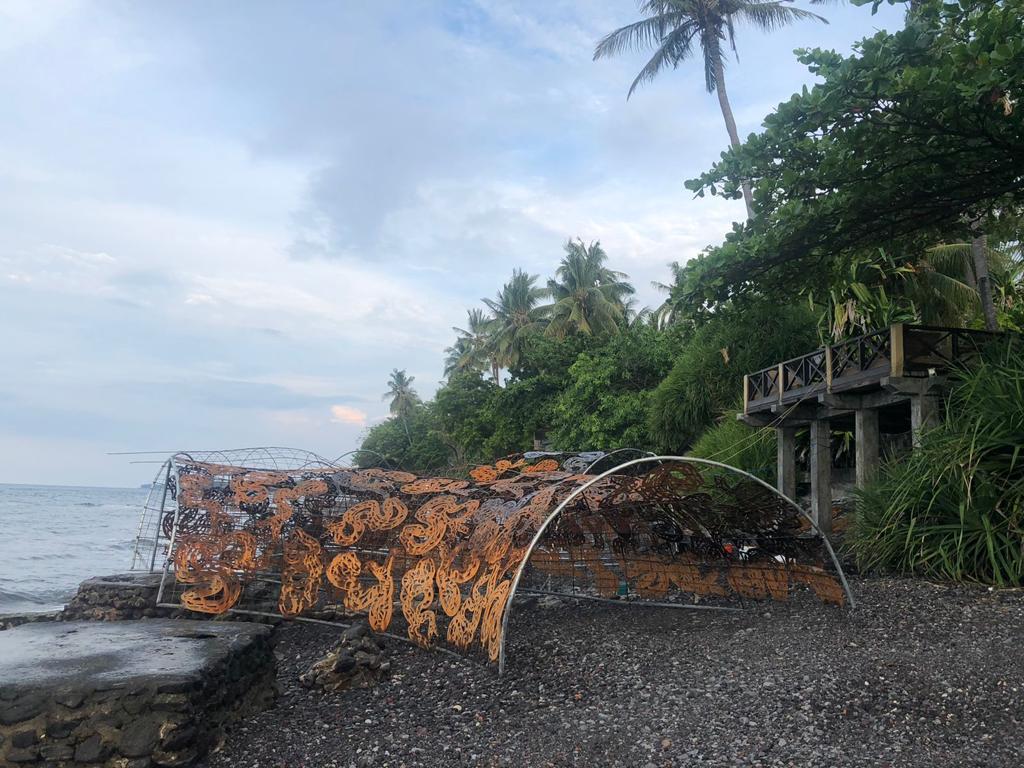
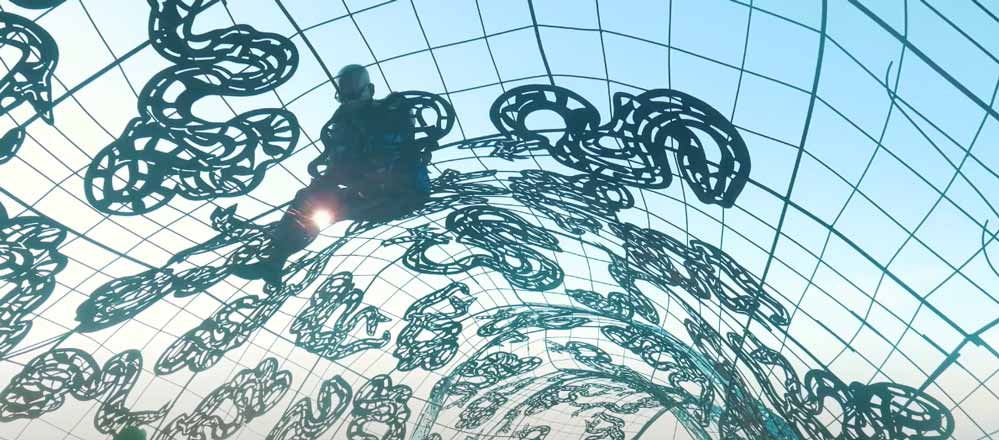
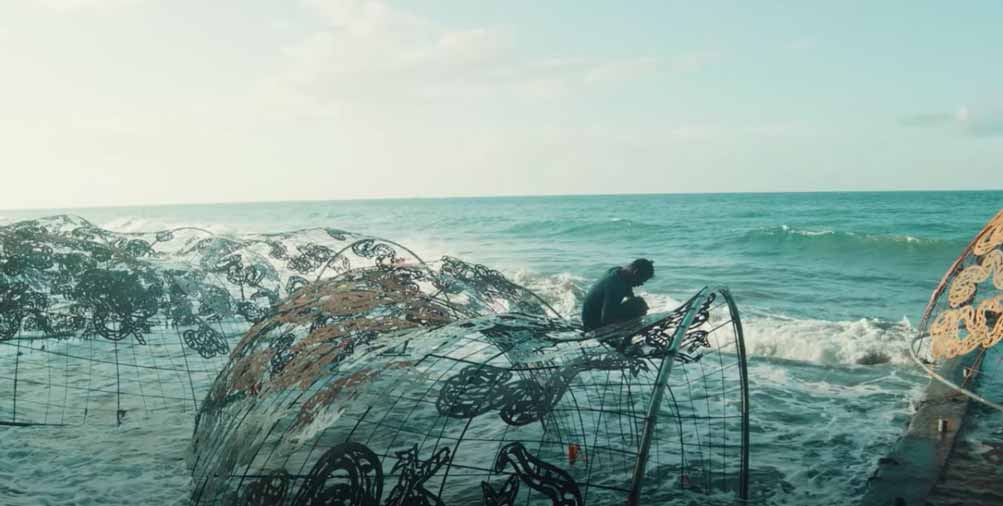
This was no mean feet. The installation is 62 metres in length, as it is inspired by the sea eel (latin name: anguilliformes). The ‘Domus’ of all his installations is the latin for ‘home’ or ‘house’, and thus each ‘coral reef house’ represents the local wildlife in some way. Like the Domus Sepiae (home of squids) in Lombok, Domus Musculi (house of mussels) in Sepa Island, Domus Pyramid Dugong (pyramid house of dugong) in North Sulawesi.
Ostenrik also said that this latest work, a series of metal tunnels and hallways that twist and turn across the ocean floor, can also be seen as a mother’s belly, a reflection of human life.
“In Bali, tourism is one of the leading sectors, and the task of Domus Aguilera is to become the home of corals and become the home of new coral reefs. In the midst of today’s environmental damage, now is not the time to be sad,” said the artist, emphasising that action was the only way to fix an issue.
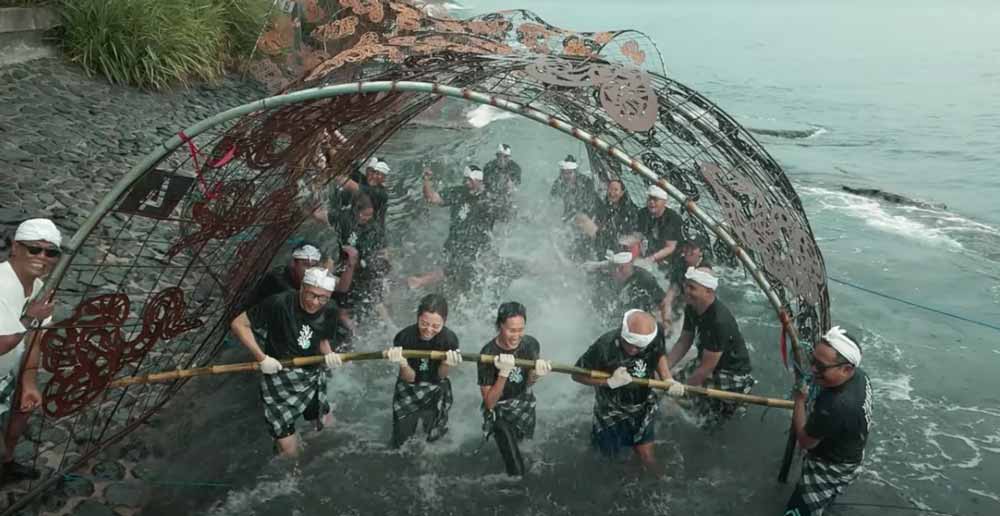
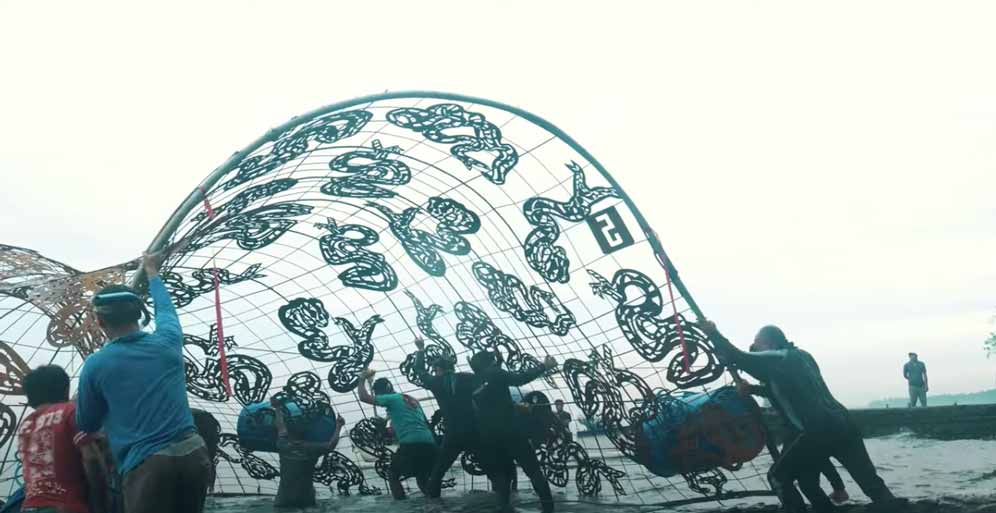
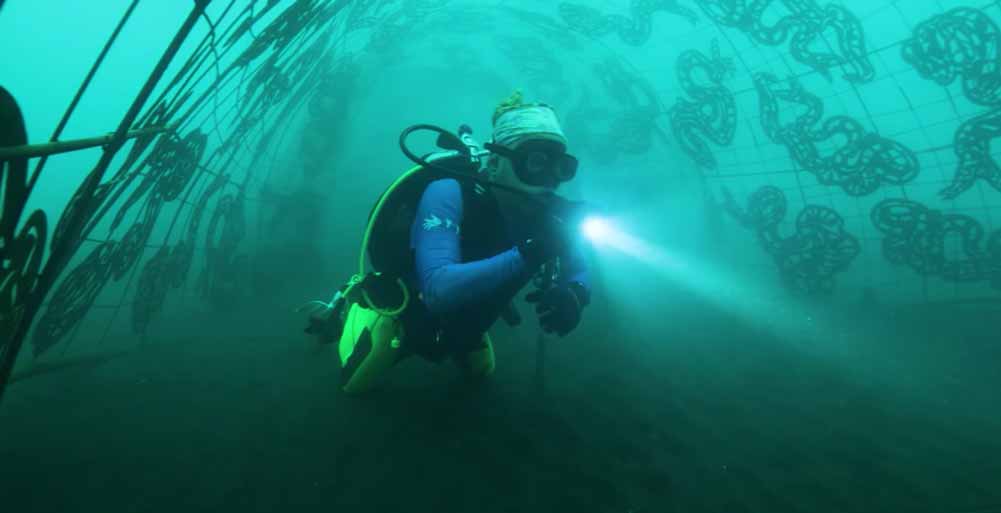
Over the years, limestone will build upon art installation, which will attract coral to grow there. The 62m structure will become a feat that divers will want to experience for years to com.
The project was completed by a whole host of volunteers, marine-biologists, craftspeople and more. Watch the full video documenting Domus Anguillae’s impressive journey from conception to submersion!
Yayasan Terumbu Rupa
Instagram: @yterumburupa
www.ytr.or.id



